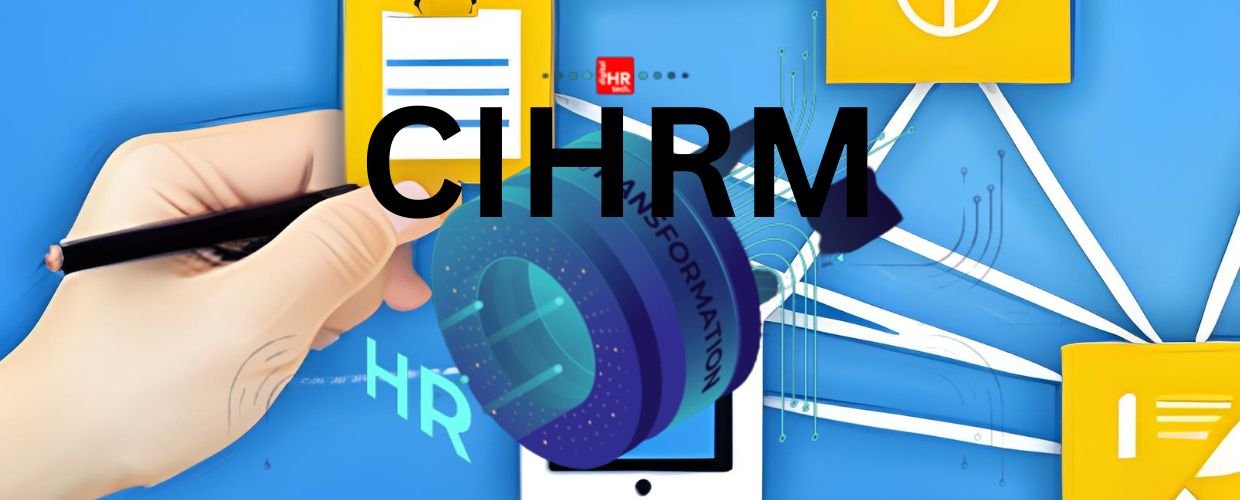In today’s fast-paced and ever-evolving business landscape, organizations constantly seek innovative ways to optimize human resource management practices. The rise of technology has paved the way for new solutions that streamline processes, enhance employee engagement, and drive overall organizational success. Integrating CIHRM (Computerized Integrated Human Resource Management) systems is a groundbreaking advancement. This article explores the concept of CIHRM and its transformative impact on modern-day human resource management.
What is CIHRM?
CIHRM, is an integrated software system consolidating various HR functions into a single digital platform. It encompasses a range of activities, including recruitment, employee onboarding, performance management, payroll processing, benefits administration, training and development, and employee engagement. Leveraging automation, data analytics, and artificial intelligence revolutionizes traditional HR practices, streamlining processes and boosting efficiency.
Benefits of CIHRM
Here are seven significant benefits of the CIHRM:
Enhanced Efficiency
CIHRM eliminates the need for manual paperwork and repetitive administrative tasks, allowing HR professionals to focus on strategic initiatives. With CIHRM, routine processes such as leave management, timesheet tracking, and employee data management are automated, saving time and reducing errors. Streamlined workflows ensure that HR teams can accomplish tasks faster, while standardized processes help maintain compliance with labor regulations.
Centralized Data Management
It provides a centralized repository for all employee-related data, including personal information, employment history, performance records, and training records. This centralization enables HR personnel to access, update, and retrieve information quickly, facilitating informed decision-making and improving data accuracy. Instead of searching through multiple spreadsheets and files, HR professionals can retrieve the required information with a few clicks, increasing productivity and improving data integrity.
Improved Recruitment and Onboarding
CIHRM systems simplify recruitment by automating candidate sourcing, resume screening, and interview scheduling. AI-powered algorithms can analyze resumes and identify the most suitable candidates, saving HR teams valuable time. Its platforms often include applicant tracking systems (ATS) that enable seamless onboarding. New hires can complete paperwork online, access necessary resources, and receive essential information, ensuring a smooth organizational transition. Streamlining recruitment and onboarding processes reduces administrative burdens and accelerates time-to-productivity for new employees.
Performance Management and Training
CIHRM systems facilitate continuous performance tracking, goal setting, and feedback mechanisms, fostering a culture of ongoing development. HR professionals can establish performance metrics and track progress in real-time, allowing for timely feedback and coaching. Moreover, CIHRM platforms offer tools for identifying skill gaps and providing targeted training programs. Organizations can enhance skill development, boost employee engagement, and promote talent retention by tailoring training initiatives to individual employee needs.
Payroll and Benefits Administration
CIHRM systems automate payroll calculations, tax deductions, and benefits administration, reducing manual errors and ensuring timely and accurate payments. By integrating with time and attendance systems, its platforms can accurately calculate hours worked, factor in overtime, and apply relevant payroll regulations. This automation saves time, minimizes errors, and increases employee satisfaction by ensuring accurate and timely compensation. Additionally, CIHRM systems streamline benefits administration by allowing employees to access and manage their benefits online, reducing administrative overhead and enhancing employee engagement.
Employee Self-Service
CIHRM platforms often offer self-service portals, empowering employees to access and update their personal information, submit leave requests, view payslips, and participate in performance appraisals. These self-service functionalities give employees greater control over their HR-related tasks, improving convenience and transparency. Employees can manage their information, reducing the need for HR intervention and enabling HR teams to focus on strategic initiatives. Moreover, self-service portals enhance employee engagement by providing easy information access and fostering empowerment and autonomy.
Data Analytics and Reporting
These systems collect and analyze vast HR data, generating valuable insights for strategic decision-making. HR professionals can leverage analytics to identify trends, predict future workforce needs, and optimize resource allocation. For example, data analytics can help identify patterns in employee performance and engagement, enabling HR teams to implement targeted interventions for improvement. Advanced reporting capabilities within CIHRM platforms allow HR professionals to generate customized reports and visualizations, providing actionable insights to drive organizational growth and effectiveness.
Challenges and Considerations
While CIHRM offers numerous benefits, its implementation may pose challenges. Organizations must consider data security and privacy, system integration with existing infrastructure, user training and adoption, and potential resistance to change. It is crucial to address these challenges proactively to ensure a smooth transition and maximize the benefits of CIHRM.
Data security and privacy are paramount considerations when implementing CIHRM systems. Organizations must protect employee data through encryption, access controls, and compliance with relevant data protection regulations. Additionally, integration with existing HR and enterprise systems is essential to ensure seamless data flow and avoid data silos. Compatibility with existing technology infrastructure and integration with other business systems are vital for successful implementation.
User training and adoption are critical for maximizing the benefits of CIHRM. HR teams and employees need to be educated on the functionality and advantages of the system. Proper training programs, documentation, and ongoing support are necessary to enable users to leverage the system’s capabilities effectively. Resistance to change is also a common challenge during implementation. Effective change management strategies, including clear communication, stakeholder involvement, and addressing concerns, are crucial for overcoming resistance and gaining user acceptance.
Conclusion
CIHRM represents a paradigm shift in human resource management, harnessing the power of technology to streamline processes, boost efficiency, and elevate employee experiences. Automating administrative tasks, integrating data, and providing valuable insights enable HR professionals to focus on strategic initiatives, fostering organizational growth and success. Embracing is not only a response to the demands of the digital age but also a strategic move to stay ahead in an increasingly competitive business landscape. Organizations that embrace it can unlock the full potential of their human capital, driving employee engagement, productivity, and overall organizational success.






